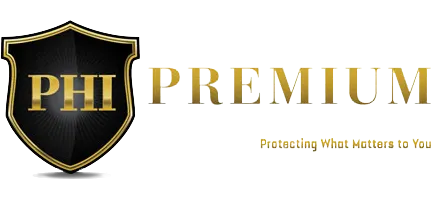What is a Premium Home Inspection?
Your premium home inspection will be performed on your behalf with the objective of providing all the relevant information necessary to assist you in your purchase decision. To gather this information, we will conduct a visual assessment of the following standard items in accordance with the HIABC Scope of Inspection:
- Lots / Grounds
- Roof
- Exterior
- Interior
- HVAC (Heating, Ventilation, Air Conditioning) systems
- Structure
- Electrical
- Plumbing
- Attic / Crawlspace
Additionally, your premium home inspection will include the following items which are not required within the scope of a standard home inspection:
- Thermal Imaging Scan – used to detect concealed active moisture or leakage, overheating electrical components, insulation defects and heat loss/gain
- Moisture Meter Spot-Checking - an additional measure of verifying the presence or absence of active moisture / leakage within vulnerable areas
- Gas Leak Detection at vulnerable areas
- Appliance Inspection (includes kitchen range, refrigerator and dishwasher)
FAQs
Typically your inspection report will be provided within 24 hours of payment and inspection completion.
For an average house in average condition we'll probably spend 2 hours on the inspection itself and complete the report writing off-site.
For sure! We typically ask clients to show up an hour or so after the inspection start time. Out of respect for the sellers / current owners we ask that you do not attend with children or extended family.
Absolutely. An inspection is always recommended before purchasing a home - whether it is old or new. You'd be surprised at the issues we sometimes find in new builds.
We are only interested in providing you with accurate information, so we do not include "ballpark" estimates. Because contractor fees and costs vary widely, we recommend consulting with two or three different contractors to determine the actual cost of any significant project or repair.
Absolutely! If you have any questions pertaining to your reports, feel free to call us.
The Basics
A professional home inspection is a process of visually analyzing the performance of house systems and components, keeping in mind the accepted building practices at the time of construction. Our job is to answer the questions, "does it work?" and "is it safe?"
The purpose of a professional home inspection is to visually identify safety issues, potentially expensive defects and their implications. Although we do in clude maintenance items in my report as a courtesy, it is important to know that the purpose is to focus on the issues that are most likely to affect a person's decision to buy the house, rather than uncover every possible imperfection (that is, unless paying an inspector tens of thousands of dollars to spend weeks on one home sounds appealing).
Common Household Insurance Issues
If any of these issues are identified, it is advised that you contact your insurance company PRIOR TO SALE CLOSING to learn their specific policies.
Different companies have different requirements.
Electrical Services Less Than 100 Amps
These were often present up until the early 1960s. New installations are not usually smaller than 100 amps because smaller services would not support most modern lifestyles in single family homes, which is a convenience issue. To insurance companies, a 60 amp service indicates a potentially less safe electrical system due to being an old installation, which may result in refusing coverage.
POLY-B (Polybutylene) Water Lines
Poly-B was installed from 1978-1995 due to its inexpensive material and ease of installation. In the U.S it was originally installed with plastic fittings and metal clamps, which resulted in costing its manufacturer close to 1 BILLION dollars in damages and replacement costs due to leakage at the joints. As you can imagine, this might make insurance companies nervous.
In BC, Poly-B was typically installed with copper / brass fittings and crimp rings, rather than plastic, which has resulted in less failures than the plastic fitting installations. Insurance policies vary, so if any Poly-B is present we highly recommend verifying your insurance company's policy on the matter prior to sale closing.
Electrical Fuse Panels
Screw-in type fuses in the electrical distribution panels were commonly used until the mid-1950s. Fuses can easily be replaced with fused that are the wrong size. If a circuit is overloaded, its fuse will consistently burn out. In such cases it is common for ill-informed occupants to replace fuses with ones that are rated for a higher amperage in order to prevent them from burning out. This is a fire hazard, as the wire will overheat if the fuse allows it to be exposed to too much amperage.
Knob and Tube Distribution Wiring
This was commonly used from the 1920s - 1950s and is an ungrounded electrical distribution system identified by its separated hot and neutral lines and the use of white porcelain knobs and tubes to support the wires, isolating them from the wood framing members. Although it is a relatively safe system (aside from the absence of grounding), potentially dangerous modifications and mechanical damage is quite common.
Wood Burning Stoves and Fireplace Inserts
If a wood or pellet-burning appliance is present, insurance companies typically want to see an updated / recent WETT inspection report. This is an inspection done to determine if the installation currently meets code requirements, which we can add to your home inspection at a discount.
Galvanized Steel Water Distribution Lines
These were used until the late 1940s and are identified by their grey colour and threaded fittings. They are prone to rusting and wear-through due to the abrasion of the water, which results in leakage.
Aged Roofing
Typically, roofing materials 20-25 years will be suspect as far as many insurance companies are concerned. Roofing that is near the end of its life may need to be replaced prior to purchasing insurance.

